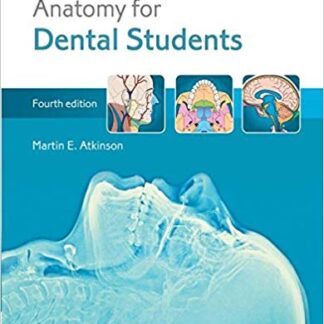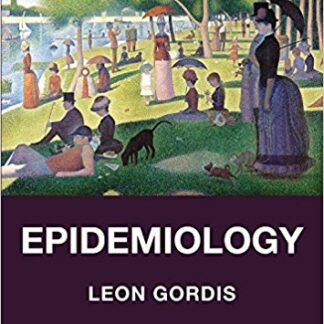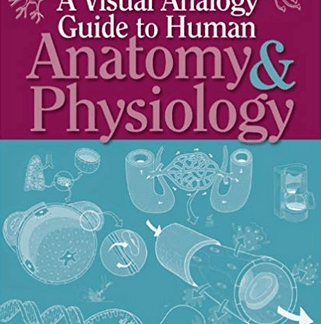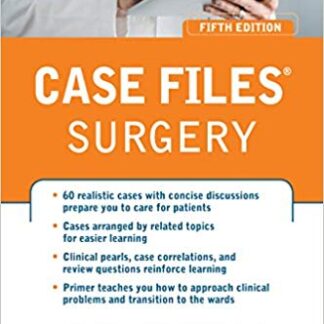Description
Mastering Competencies in Family Therapy: A Practical Approach to Theories and Clinical Case Documentation 4th Edition by Diane Gehart, ISBN-13: 978-0357764565
[PDF eBook eTextbook] – Available Instantly
- Publisher: Cengage Learning; 4th edition (April 21, 2023)
- Language: English
- 672 pages
- ISBN-10: 0357764560
- ISBN-13: 978-0357764565
Gehart’s MASTERING COMPETENCIES IN FAMILY THERAPY: A PRACTICAL APPROACH TO THEORIES AND CLINICAL CASE DOCUMENTATION, 4th Edition, not only teaches you about family therapy theories, but also how to use them. A resource you will turn to again and again, it covers most of what you need to know in graduate school and to pass your licensing exams. Students love the book’s relaxed, down-to-earth style that makes even complex concepts easy to understand, along with its real-world clinical forms — case conceptualization and treatment planning — that can be used with clients. Integrating diversity and research considerations into theoretical discussions and practical applications, the book provides a more holistic and nuanced understanding of couple and family therapy. The fourth edition is packed with the latest research, new theories, telehealth practices, licensure exam prep tips and more.
Table of Contents:
Cover Page
Title Page
Copyright Page
Dedication
Becoming Competent with Competencies, or What I Have Learned about Learning
The What and Why of Competencies
Preface
Acknowledgments
About the Author
Author’s Introduction: On Saying “Yes” and Falling in Love
Part I. Theoretical Foundations
Chapter 1. Competency and Theory in Family Therapy
The Secret to Competent Therapy
Mapping a Successful Therapeutic Journey
From Trainee to Seasoned Therapist
Competency and Theory: Why Theory Matters
Why All the Talk about Competency?
Competency and (Not) You
Common Threads of Competencies
Social Justice, Diversity, and Competency
Research and Competency
Law, Ethics, and Competency
Person-of-the-Therapist and Competency
How This Book Is Different and What It Means to You
Lay of the Land
Anatomy of a Theory
Voice and Tone
Suggested Uses for This Text
Suggestions for Thinking about Family Therapy Theories
Suggestions for Using This Book to Learn Theories
Suggestions for Using This Book to Write Treatment Plans
Suggestions for Use in Internships and Clinical Practice
Suggestions for Studying for Licensing Exams
Suggestions for Faculty to Measure Competencies and Student Learning
Questions for Personal Reflection and Class Discussion
Online Resources for Students and License Exam Candidates
Online Resources for Instructors
Resources for Professional Competencies
References
Chapter 2. Philosophical Foundations of Family Therapy: Systems Theory and Postmodernism
Lay of the Land
Systemic Foundations
Rumor Has It: The People and Their Stories
Systemic Theoretical Concepts
Postmodern Foundations
The Evolution from Systems and Social Constructionism
Rumor Has It: The People and Their Stories
Postmodern Theoretical Concepts
Once Upon a Time…: Philosophical Wrap-Up
Questions for Personal Reflection and Class Discussion
Online Resources
References
Chapter 3. Social Justice in Family Therapy
Social Justice: Diversity, Equity, and Inclusion in Family Therapy
Lay of the Land
Rumor Has It: Early Pioneers and Their Stories
Celia Jaes Falicov
Social Justice: Foundational Terminology
Intersectionality and Social Location
Cultural Humility
Equity vs. Equality
Privilege
Social Justice: Philosophical Foundations
Critical Social Theories
The Social Construction of Us versus Them
Socioculturally Attuned Family Therapy
Relational Responsiveness
International and Indigenous Models
Global Family Therapy: Systemic Inclusive Framework
Just Therapy: Working with Indigenous, Native, and Aboriginal Communities
Sociocultural Oppression and Trauma
Two Forms of Sociocultural Oppression
Residual Effects of Slavery
Liberation-Based Healing Perspectives
Gender and Power in Family Therapy
LGBTQIA + Affirmative Therapy
LGBTQ-Affirmative Therapy: Philosophical Foundations
Self-of-the-Therapist and Sociocultural Relational Connection
Questions for Personal Reflection and Class Discussion
Online Resources
References
Chapter 4. Cross-Theoretical and Integrative Frameworks
Lay of the Land
Tomm’s IPscope
Identify Interpersonal Patterns
Types of Interpersonal Patterns
Using Tomm’s IPscope to Compare Family Therapy Models
Integrative Systemic Therapy
In a Nutshell: The Least You Need to Know
Conceptual Pillars: Five Foundational Assumptions
The Big Picture: The Essence of IST
The Viewing: Case Conceptualization
The Doing: Interventions
Therapy that Works: A Unifying Framework for Psychotherapy
A Brief History of the Therapy that Works Framework
Professional Knowledge Turned “Inside-Out”
Learning the Doing
The Big Picture: The Six Components of the Therapy that Works Framework
Self-of-the-Clinician
Making Connection: Collaborative Connecting
The Viewing: The 4-Level Conceptualization
Reducing Therapist Bias
Evidence-Informed Treatment Planning
Considering the Evidence-Base
The Doing: Interventions
Making Change Last: Long-Term Wellness
Putting It All Together
Cross-Theoretical and Integrative Wrap Up
Questions for Personal Reflection and Class Discussion
Online Resources
References
Chapter 5. Contemporary Practice: Research, Ethics, and Telehealth
Lay of the Land
Research and the Evidence Base
The Minimum Standard of Practice: Evidence-Based Practice
Heart of the Matter: Common Factors Research
Show Me Proof: Evidence-Based Therapies
Interpersonal Neurobiology
Review of the MFT Evidence Base
Legal and Ethical Issues in Couple and Family Therapy
Lay of the Land: More than Just Rules
The Big Picture: Standards of Professional Practice
Specific Legal and Ethical Concerns in Couple and Family Work
Current Legal and Ethical Issues in Couple and Family Work
Conclusion
Telehealth: Effectiveness
Safety and Pragmatic Considerations for Relational Telehealth
Clinical Considerations
Questions for Personal Reflection and Class Discussion
Online Resources for Research
Online Resources for Law and Ethics
References
Part II. Couple and Family Therapy Theories
Chapter 6. Systemic and Strategic Therapies
Lay of the Land
In the Grand Scheme of Things: Cross-Theoretical Comparison
Systemic–Strategic Family Therapy
In a Nutshell: The Least You Need to Know
The Juice: Significant Contributions to the Field
Rumor Has It: The People and Their Stories
The Big Picture: Overview of Treatment
Making a Connection: The Therapeutic Relationship
The Viewing: Case Conceptualization and Assessment
Targeting Change: Goal Setting
The Doing: Language-Based Interventions
The Doing: Action-Oriented Interventions
Tapestry Weaving: Diversity Considerations
Ethnic, Racial, and Cultural Diversity
Sexual and Gender Identity Diversity
Research and the Evidence Base
Putting It All Together: Systemic–Strategic Case Conceptualization and Treatment Plan Templates
Areas for Theory-Specific Case Conceptualization: Systemic–Strategic
Clinical Spotlight: Multisystemic Therapy
Goals in Multisystemic Therapy
Case Conceptualization
Principles of Intervention
Clinical Spotlight: Brief Strategic Family Therapy
Goals
Case Conceptualization
Principles of Intervention
Systemic Case Study: Adolescent Substance Use and Divorce
Questions for Personal Reflection and Class Discussion
Online Resources
References
Chapter 7. Structural Family Therapies
Lay of the Land
In the Grand Scheme of Things: Cross-Theoretical Comparison
Structural Family Therapy
In a Nutshell: The Least You Need to Know
The Juice: Significant Contributions to the Field
Rumor Has It: The People and Their Stories
The Big Picture: Overview of Treatment
Making Connections: The Therapeutic Relationship
The Viewing: Case Conceptualization and Assessment
Targeting Change: Goal Setting
The Doing: Interventions
Research and the Evidence Base: Structural Family Therapy
Putting It All Together: Structural Case Conceptualization and Treatment Plan Templates
Theory-Specific Case Conceptualization: Structural
Tapestry Weaving: Working with Diverse Populations
Clinical Spotlight: Ecosystemic Structural Family Therapy (ESFT)
The Big Picture: Overview of Treatment
The Viewing: Case Conceptualization
Targeting Change: Goals
The Doing: Interventions
ESFT Supervision/Training Models
Clinical Spotlight: Intensive Structural Therapy
The Big Picture: Overview of Treatment
The Viewing: Case Conceptualization
Functional Family Therapy (FFT)
In a Nutshell: The Least You Need to Know
The Juice: Significant Contributions to the Field
Rumor Has It: People and Their Stories
The Big Picture: Overview of Treatment
Making a Connection: The Therapeutic Relationship
The Viewing: Case Conceptualization and Assessment
Targeting Change: Goal Setting
The Doing: Interventions
Research and the Evidence Base: FFT
Putting It All Together: FFT Case Conceptualization and Treatment Plan Templates
Areas for Theory-Specific Case Conceptualization: FFT
Tapestry Weaving: Diversity Considerations
Structural Case Study: Teen Conduct Issues
Questions for Personal Reflection and Class Discussion
Online Resources
References
Chapter 8. Experiential Family Therapies
Lay of the Land
Shared Assumptions and Practices in Experiential Approaches
In the Grand Scheme of Things: Cross-Theoretical Comparison
The Satir Model
In a Nutshell: The Least You Need to Know
The Juice: Significant Contributions to the Field
Rumor Has It: The People and Their Stories
The Big Picture: Overview of Treatment
Making Connections: The Therapeutic Relationship
The Viewing: Case Conceptualization and Assessment
Targeting Change: Goal Setting
The Doing: Interventions
Putting It All Together: Satir Case Conceptualization and Treatment Plan Templates
Areas for Theory-Specific Case Conceptualization: Satir
Tapestry Weaving: Working with Diverse Populations
Research and the Evidence Base: Satir Model
Emotionally Focused Therapy (EFT)
In a Nutshell: The Least You Need to Know
The Juice: Significant Contributions to the Field
Rumor Has It: The People and Their Stories
The Big Picture: Overview of Treatment
Making Connection: The Therapeutic Relationship
The Viewing: Case Conceptualization and Assessment
Targeting Change: Goal Setting
The Doing: Interventions
Putting It All Together: EFT Case Conceptualization and Treatment Plan Templates
Areas for Theory-Specific Case Conceptualization: EFT
Tapestry Weaving: Diversity Considerations
Research and the Evidence Base: EFT
Clinical Spotlight: Symbolic–Experiential Therapy
In a Nutshell: The Least You Need to Know
The Juice: Significant Contributions to the Field
The Big Picture: Overview of Treatment
Making Connections: The Therapeutic Relationship
The Viewing: Case Conceptualization and Assessment
Questions for Personal Reflection and Class Discussion
Experiential Case Study: Child Sexual Abuse
Online Resources
References
Chapter 9. Intergenerational and Psychoanalytic Family Therapies
Lay of the Land
In the Grand Scheme of Things: Cross-Theoretical Comparison
Bowen Intergenerational Therapy
In a Nutshell: The Least You Need to Know
The Juice: Significant Contributions to the Field
Rumor Has It: The People and Their Stories
The Big Picture: Overview of Treatment
Making a Connection: The Therapeutic Relationship
The Viewing: Case Conceptualization and Assessment
Targeting Change: Goal Setting
The Doing: Interventions
Interventions for Special Populations
Putting It All Together: Case Conceptualization and Treatment Plan Templates
Areas for Theory-Specific Case Conceptualization: Bowen
Psychoanalytic Family Therapies
In a Nutshell: The Least You Need to Know
The Juice: Significant Contributions to the Field
Rumor Has It: The People and Their Stories
The Big Picture: Overview of Treatment
Making a Connection: The Therapeutic Relationship
The Viewing: Case Conceptualization and Assessment
Targeting Change: Goal Setting
The Doing: Interventions
Putting It All Together: Case Conceptualization and Treatment Plan Templates
Areas for Theory-Specific Case Conceptualization: Psychodynamic
Clinical Spotlight: Internal Family Systems Therapy
In a Nutshell: The Least You Need to Know
The Juice: Significant Contributions to the Field
Rumor Has It: The People and Their Stories
Making a Connection: The Therapeutic Relationship
The Viewing: Case Conceptualization and Assessment
Targeting Change: Goal Setting
The Doing: Interventions
Clinical Snapshot: Attachment-Based Family Therapy
Tapestry Weaving: Working with Diverse Populations
Gender Diversity: The Women’s Project
Ethnicity and Cultural Diversity
Sexual and Gender Identity Diversity
Research and the Evidence Base
Questions for Personal Reflection and Class Discussion
Intergenerational Case Study: Panic, Launching Children, and an Adult Survivor of Sexual Abuse
Online Resources
References
Chapter 10. Cognitive–Behavioral and Mindfulness-Based Couple and Family Therapies
Lay of the Land
In the Grand Scheme of Things: Cross-Theoretical Comparison
Cognitive–Behavioral Family Therapies
In a Nutshell: The Least You Need to Know
The Juice: Significant Contributions to the Field
Rumor Has It: The People and Their Stories
The Big Picture: Overview of Treatment
Making a Connection: The Therapeutic Relationship
The Viewing: Case Conceptualization and Assessment
Targeting Change: Goal Setting
The Doing: Behavioral Interventions
The Doing: Cognitive Interventions
Putting It All Together: Case Conceptualization And Treatment Plan Templates
Areas for Theory-Specific Case Conceptualization: CBFT
Clinical Spotlight: Integrative Behavioral Couples Therapy
In a Nutshell: The Least You Need to Know
The Big Picture: Overview of Treatment
The Viewing: Case Conceptualization
The Doing: Interventions
Clinical Spotlight: Gottman Method Couples Therapy Approach
In a Nutshell: The Least You Need to Know
The Big Picture: Overview of Treatment
Making a Connection: The Therapeutic Relationship
The Viewing: Case Conceptualization and Assessment
The Doing: Interventions
Clinical Snapshot: Trauma-Focused CBT
Evidence-Based Couple and Family Group Therapies
Lay of the Land
Psychoeducational Multifamily Groups for Severe Mental Illness
Multi-Couple Groups for Intimate Partner Abuse
Relationship Enhancement Programs
Parent Training
Mindfulness-Based Therapies
In a Nutshell: The Least You Need to Know
A Brief History of Mindfulness in Mental Health
Mindfulness Basics
Resources to Support Your Practice
Specific Mindfulness Approaches
Loving Kindness Meditation
Tapestry Weaving: Working with Diverse Populations
Ethnic, Racial, and Cultural Diversity
Sexual and Gender Identity Diversity
Research and the Evidence Base
Questions for Personal Reflection and Class Discussion
Cognitive–Behavioral Case Study: ADHD and Blended Family
Online Resources
References
Chapter 11. Solution-Based Therapies
Lay of the Land
In the Grand Scheme of Things: Cross-Theoretical Comparison
Solution-Based Therapies
In a Nutshell: The Least You Need to Know
Common Solution-Based Therapy Myths
The Juice: Significant Contributions to the Field
Rumor Has It: The People and Their Stories
The Big Picture: Overview of Treatment
Making a Connection: The Therapeutic Relationship
The Viewing: Case Conceptualization and Assessment
Targeting Change: Goal Setting
The Doing: Interventions
Interventions for Specific Problems
Putting It All Together: Case Conceptualization and Treatment Plan Templates
Theory-Specific Case Conceptualization: Solution-Based
Solution-Oriented Ericksonian Hypnosis
Difference from Traditional Hypnosis
The Big Picture: Overview of Treatment
The Doing: Interventions
Tapestry Weaving: Working with Diverse Populations
Ethnic, Racial, and Cultural Diversity
Sexual and Gender Identity Diversity
Research and the Evidence Base
Questions for Personal Reflection and Class Discussion
Solution-Based Therapy Case Study: Same-Sex Couple Conflict
Online Resources
References
Chapter 12. Postmodern and Sociocultural Approaches
Lay of the Land
In the Grand Scheme of Things: Cross-Theoretical Comparison
Collaborative Therapy and Reflecting Teams
In a Nutshell: The Least You Need to Know
The Juice: Significant Contributions to the Field
Rumor Has It: The People and Their Stories
The Big Picture: Overview of Treatment
Making a Connection: The Therapeutic Relationship
The Viewing: Case Conceptualization and Assessment
Targeting Change: Goal Setting
The Doing: Facilitating Transformation
Reflecting Teams and the Reflecting Process
Putting It All Together: Collaborative Case Conceptualization and Treatment Plan Templates
Areas for Theory-Specific Case Conceptualization: Collaborative
Narrative Therapy
In a Nutshell: The Least You Need to Know
The Juice: Significant Contributions to the Field
Rumor Has It: The People and Their Stories
The Big Picture: Overview of Treatment
Making a Connection: The Therapeutic Relationship
The Viewing: Case Conceptualization and Assessment
Targeting Change: Goal Setting
The Doing: Interventions
Interventions for Specific Problems
Putting It All Together: Narrative Case Conceptualization and Treatment Plan Templates
Areas for Theory-Specific Case Conceptualization: Narrative
Clinical Spotlight: Open Dialogue, an Evidence-Based Approach to Psychosis
Clinical Spotlight: Socioemotional Relationship Therapy
Implications for Practice
Tapestry Weaving: Working with Diverse Populations
Socioculturally Attuned Guideline for Postmodern Therapies
Applications with Native Americans, First Nations, and Aboriginals
Hispanic/Latinx Youth
Multiracial/Ethnic Individuals and Couples
Identifying Racial and Cultural and Related Gender Discourses
Sexual and Gender Identity Diversity
Research and the Evidence Base
Research on Postmodern Therapies
Neurobiology of Narrative
Postmodern Case Study: Self-Harm, Depression, Same-Sex Blended Family
Questions for Personal Reflection and Class Discussion
Online Resources
References
Part III. Clinical Case Documentation
Chapter 13. Case Conceptualization
Map to Competency
Step 1: Mapping the Territory
Case Conceptualization and the Art of Viewing
Overview of Cross-Theoretical Case Conceptualization
Comprehensive Systemic Case Conceptualization 4.0
Introduction to Client and Significant Others
Presenting Concerns
Background Information
Client/Family Strengths and Social Location
Family Structure
Interactional Patterns
Intergenerational and Attachment Patterns
Solution-Based Assessment
Postmodern: Social Location and Dominant Discourses
Client Perspectives
Case Conceptualization, Diversity, and Sameness
Comprehensive Cross-Theoretical Case Conceptualization
Online Resources
References
Chapter 14. Clinical Assessment
Step 2: Identifying Oases and Obstacles
Clinical Assessment and Diagnosis
Purpose of Clinical Assessment and Diagnosis
Diagnosis and Our Inescapable Cultural Lenses
Diagnosis and Gender
Social Justice and the Cultural Case Formulation
Mental Health Diagnosis in Family Therapy
Systemic Perspectives on Diagnosis
Postmodern Perspectives on Diagnosis
A General Family Therapy Approach to Diagnosis
Contemporary Issues in Diagnosis
Dimensional Assessment: The Future of Diagnosis
The Recovery Model and Diagnosis
Parity and Nonparity Diagnoses
Introduction to the DSM-5-TR
Title of the DSM-5-TR
Manual Structure
Organization of Diagnostic Chapters
Diagnostic Codes and the ICD
DSM-5 Diagnosis Format and Considerations
Subtypes and Specifiers
NOS versus NEC Diagnosis
WHODAS 2.0
Cultural Formulation and Assessment
DSM-5-TR Major Changes
Conducting a Clinical Assessment
Diagnostic Interview and Mental Status Exam
Mental Status Exam in Couple and Family Therapy
Cross-Cutting Symptom Measures
Level 1 Domains for Adults
Level 1 Domains for Children
Level 2 Assessments
Symptom Severity Scales
Early Development and Home Background
Other Possible Assessment Instruments
Measures for Broad Range of Symptoms
Measures for Specific Symptoms/Syndromes
Making a Diagnosis
Documenting Clinical Assessment
Identifying Information
Risk Management
Case Management
Communicating with Other Professionals
Language of the DSM
Mental Status Terms
Interpersonal Issues
Common Mood Descriptors
Common Affect Descriptors
Common Sleep Descriptors
Common Eating Descriptors
Common Anxiety Descriptors
Common Psychotic Descriptors
Common Motor Activity Descriptors
Common Thought Descriptors
Clinical Assessment Form
Questions for Personal Reflection and Class Discussion
Online Resources
References
Chapter 15. Treatment Planning
Treatment+ Plan = ?
Step 3: Selecting a Path
Clinical Treatment Plans
Writing Useful Client Goals
The Basic Steps
The Goal-Writing Process
Writing Measurable Goals
Writing Useful Interventions
Writing Useful Therapeutic Tasks
Social Location and Diversity Considerations
Evidence-Based Practice
Client Perspectives
Do Plans Make a Difference?
Questions for Personal Reflection and Class Discussion
References
Chapter 16. Evaluating Progress in Therapy
Step 4: Evaluating Progress
Nonstandardized Evaluations
Standardized Evaluations
Ultrabrief Measures
Brief Symptom Measures
Couple Measures
Family Measures
Final Thoughts on Outcome
Questions for Personal Reflection and Class Discussion
Online Resources
References
Chapter 17. Document It: Progress Notes
Step 5: Documenting It: A Profession behind Closed Doors
Two Different Animals: Progress Notes versus Psychotherapy Notes
Progress Notes
Progress Note Ingredients
Progress Note Options
The All-Purpose HIPAA Form for Progress Notes
Completing a Progress Note Form
Client Number
Date, Time, and Session Length
Persons Present
CPT Billing Codes
Symptoms and Progress
Interventions
Client Response
Plan
Crisis Issues
Consultation and Supervision
Collateral Contacts
A Time and Place for Progress Notes
Electronic Record Keeping
Final Note on Notes
Questions for Personal Reflection and Class Discussion
Online Resources
References
Media Index
Chapter 6. Systemic and Strategic Therapies
Chapter 7. Structural Family Therapies
Chapter 8. Experiential Family Therapies
Chapter 9. Intergenerational and Psychoanalytic Family Therapies
Chapter 10. Cognitive–Behavioral and Mindfulness-Based Couple and Family Therapies
Chapter 11. Solution-Based Therapies
Chapter 12. Postmodern and Sociocultural Approaches
Afterword. Closing Thoughts: Where to Go from Here?
Appendix A. The Family Therapy Core Competencies
Appendix B. CACREP Competency-Based Standards
Appendix C. Psychology Benchmarks
Appendix D. Social Work 2015 Competencies
Diane Gehart is a professor in the marriage, family and therapy and counseling programs at California State University, Northridge and the founder of the Therapy that Works Institute. She has authored numerous books, including CASE DOCUMENTATION IN COUNSELING AND PSYCHOTHERAPY, THEORY AND TREATMENT PLANNING IN COUNSELING AND PSYCHOTHERAPY, MINDFULNESS AND ACCEPTANCE IN COUPLE AND FAMILY THERAPY, and MASTERING COMPETENCIES IN FAMILY THERAPY. In addition to co-editing COLLABORATIVE THERAPY: RELATIONSHIPS AND CONVERSATIONS THAT MAKE A DIFFERENCE and COLLABORATIVE-DIALOGIC PRACTICE: RELATIONSHIPS AND CONVERSATIONS ACROSS CULTURES AND CONTEXTS, Dr. Gehart has developed two systems for assessing student learning: THE COMPLETE MFT CORE COMPETENCY ASSESSMENT SYSTEM and THE COMPLETE COUNSELING ASSESSMENT SYSTEM. Her areas of specialty include mindfulness, mental health recovery, postmodern and systemic therapies, sexual abuse treatment, gender issues, children and adolescents, client advocacy, qualitative research and education in family therapy. She speaks internationally, having conducted workshops to professional and general audiences in the United States, Canada, Europe and Mexico, and her work has been featured in newspapers, radio shows and television worldwide. Dr. Gehart is an associate faculty member at three international postgraduate training institutes: The Taos Institute, Houston Galveston Institute and The Marburg Institute for Collaborative Studies in Germany. Additionally, she is an active leader in state and national professional organizations. Dr. Gehart maintains a private practice in Agoura Hills, California, specializing in couples, families, trauma, life transitions and difficult-to-treat cases.
What makes us different?
• Instant Download
• Always Competitive Pricing
• 100% Privacy
• FREE Sample Available
• 24-7 LIVE Customer Support





